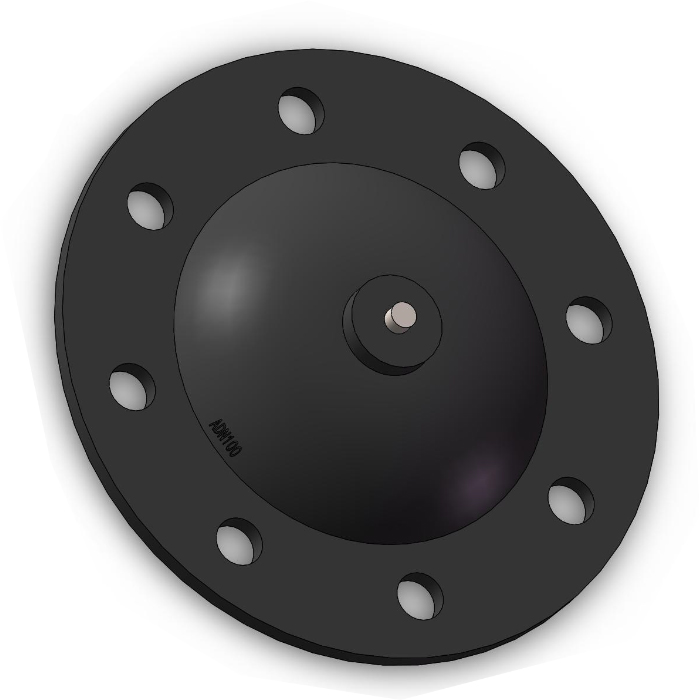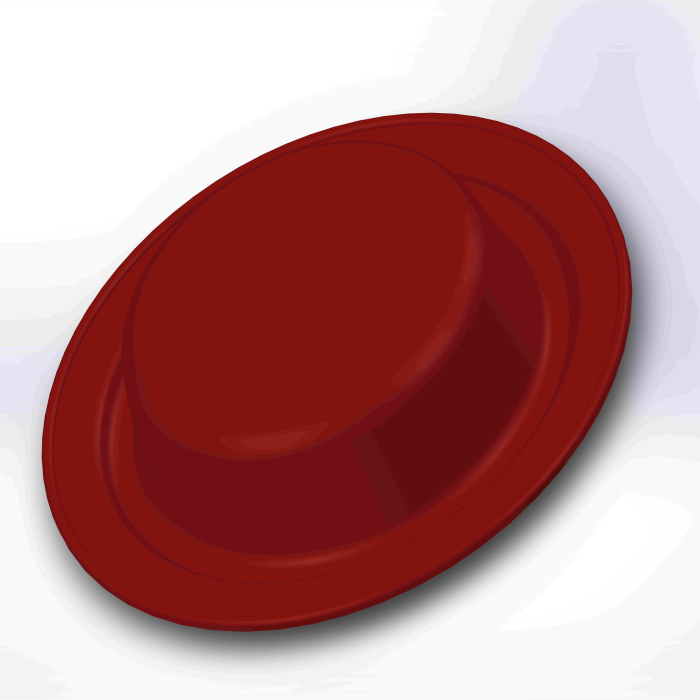GENERAL SEALTECH focuses on the diaphragm industry. Our main products are Turbo Actuator Waste-gate Diaphragms,Rubber diaphragms,LPG CNG Diaphragm,Rolling diaphragm,Diaphragm Valve pump Diaphragms,Teflon / PTFE Diaphragm, etc. Our products are widely used in industries such as chemical industry,automotive industry,Battery industry, etc. Our engineers can recommend dimensions based on usage, draw drawings based on samples, and even assist with design. Welcome OEM and ODM.
We have obtained certificates such as REACH,EN681-1,CCS,FDA,PAHS,etc. We can provide professional technical support during the pre-sale period; We will provide regular feedback on production progress and ensure timely delivery during the mid-term sales period. Welcome to visit our factory and company.
| Product name | back pressure regulator diaphragm |
| Place of Origin | China |
| Brand Name | GENERAL SEALTECH |
| Colors | orange,Recommended black |
| Type | Diaphragm |
| Quality | 100% Inspection |
| Certification | WRAS,CCS,EN681-1,RoHS,FDA,etc |
| Export region | America,Oceania,Africa… |
| Export country | USA,Japan,Italy,Australia,Netherlands Antilles,Saint Pierre and Miquelon,Barbados…etc |
| Temperature | -40 °C to +220°C |
| Size | Customizable size |
| Product Material | EPDM,AEM,FKM,FVMQ,etc |
| Feature | Durable, water/dust/oil proof |
| Packaging Details | Export Standard Packing |
| After-sales Service | Online technical support |
| MOQ | 100 Pieces(negotiable) |
| Port | Ningbo |
| Application | Seal for Automotive,Valve…etc |
| Processing Service | Cutting, Extruded and Moulded, Plastic Packing |
| Properties | Strong Resilience,Oil Resistance,Steam Resistance…etc |
| Supply Ability | 50000-200000 Piece/Pieces per Month |
| Lead time (days) | 7-15 (To be negotiated) |
Please note: This table is for reference only, please consult us for specific information.
back pressure regulator diaphragm technology can be widely used in various application fields. It can be used for material control and purification of liquids,air,drugs,food, and other media, as well as isolation, catalysis, and membrane functions.
The diaphragm has strong wear resistance, but it is easily damaged during installation. If cracks appear, they should be reinstalled in a timely manner;
During normal use, check the sealing condition of the diaphragm to prevent water leakage;
Please do not change the installation position of the diaphragm product during use to avoid affecting the effect.
Adopting the latest technology to ensure optimal material detail processing and high-quality performance.
back pressure regulator diaphragm—FAQs Guide
2.Are there specialized back pressure regulator diaphragm for high-pressure applications, and what features make them suitable for these conditions?
3.As a back pressure regulator diaphragm manufacturer,what services can we provide?
4.How do back pressure regulator diaphragm contribute to the isolation of different process media or gases within a system?
5.As a back pressure regulator diaphragm manufacturer,What delivery terms do you accept?
6.As a back pressure regulator diaphragm manufacturer,how can we guarantee quality?
7.What are the considerations for choosing between elastomeric back pressure regulator diaphragm and non-elastomeric back pressure regulator diaphragm for specific applications?
8.What types of sealing mechanisms are commonly used with back pressure regulator diaphragm, such as clamped, bolted, or adhesive seals?
9.As a back pressure regulator diaphragm manufacturer,Can you supply different color materials?
10.About back pressure regulator diaphragm,What information should the customer provide to get an accurate quote from us?
11.What role do back pressure regulator diaphragm play in controlling fluid flow and preventing leaks in pumps and valves?
12.About back pressure regulator diaphragm,Can I get some samples?
13.About back pressure regulator diaphragm,How can I get the best price and quality?
14.Can back pressure regulator diaphragm be used in air-operated or pneumatic systems, and how do they contribute to system functionality?
1.How do back pressure regulator diaphragm maintain their flexibility and resilience over time, and what factors can lead to wear or degradation?
Diaphragms maintain their flexibility and resilience over time by being made of materials that are resistant to wear and tear. Common materials used for diaphragms include rubber, silicone, and polyurethane. These materials are designed to be durable and flexible, and can withstand a wide range of temperatures and pressures.
Factors that can lead to wear or degradation of diaphragms include exposure to extreme temperatures, exposure to chemicals, and physical damage. Additionally, diaphragms can become brittle over time due to age and exposure to the elements. To prevent wear or degradation, it is important to inspect diaphragms regularly and replace them when necessary.
2.Are there specialized back pressure regulator diaphragm for high-pressure applications, and what features make them suitable for these conditions?
Yes, there are specialized diaphragms for high-pressure applications. These diaphragms are designed to withstand higher pressures and temperatures than standard diaphragms. They are typically made from reinforced elastomers or metal materials such as stainless steel or Hastelloy. These materials are chosen for their strength and durability, as well as their ability to resist corrosion and wear. Additionally, these diaphragms are designed with thicker walls and reinforced edges to provide additional strength and stability.
3.As a back pressure regulator diaphragm manufacturer,what services can we provide?
Free design and samples offered.Custom package and stickers.
4.How do back pressure regulator diaphragm contribute to the isolation of different process media or gases within a system?
Diaphragms are used to separate different process media or gases within a system by creating a physical barrier between them. This barrier prevents the media or gases from mixing, thus providing a degree of isolation. Diaphragms are also used to control the flow of media or gases within a system, as they can be designed to open and close in response to pressure or other external factors.
5.As a back pressure regulator diaphragm manufacturer,What delivery terms do you accept?
We accept EXW,FOB, CIF. If you want to use other delivery terms,please contact us.

6.As a back pressure regulator diaphragm manufacturer,how can we guarantee quality?
Always a pre-production sample before mass production;Always final Inspection before shipment.
7.What are the considerations for choosing between elastomeric back pressure regulator diaphragm and non-elastomeric back pressure regulator diaphragm for specific applications?
We are a professional back pressure regulator diaphragm manufacturer, and the factors we consider include:
1. Cost: Elastomeric diaphragms are typically more expensive than non-elastomeric diaphragms.
2. Durability: Elastomeric diaphragms are more durable and can withstand higher pressures and temperatures than non-elastomeric diaphragms.
3. Chemical Compatibility: Elastomeric diaphragms are more resistant to chemical attack than non-elastomeric diaphragms.
4. Flexibility: Elastomeric diaphragms are more flexible than non-elastomeric diaphragms, allowing them to be used in applications where a tight seal is required.
5. Performance: Elastomeric diaphragms are better at maintaining a seal over time than non-elastomeric diaphragms.
8.What types of sealing mechanisms are commonly used with back pressure regulator diaphragm, such as clamped, bolted, or adhesive seals?
In general, back pressure regulator diaphragm will use these sealing mechanisms:
1. Clamped Seals: Clamped seals are the most common type of diaphragm seal. They are typically used in applications where the pressure is relatively low and the temperature is not too extreme. Clamped seals are easy to install and provide a reliable seal.
2. Bolted Seals: Bolted seals are used in applications where the pressure is higher and the temperature is more extreme. They are more difficult to install than clamped seals, but provide a more reliable seal.
3. Adhesive Seals: Adhesive seals are used in applications where the pressure is low and the temperature is not too extreme. They are easy to install and provide a reliable seal. However, they are not as reliable as clamped or bolted seals.
9.As a back pressure regulator diaphragm manufacturer,Can you supply different color materials?
Yes, we can produce custom molded rubber and silicone rubber products in different colors, the color code will be required in case of an order.
10.About back pressure regulator diaphragm,What information should the customer provide to get an accurate quote from us?
Customers need to provide relevant technical requirements, drawings, pictures, industrial voltage, planned output, etc.

11.What role do back pressure regulator diaphragm play in controlling fluid flow and preventing leaks in pumps and valves?
Diaphragms are flexible membranes that are used to control fluid flow and prevent leaks in pumps and valves. They are typically made of rubber or plastic and are designed to flex and move in response to pressure changes. When pressure is applied to one side of the diaphragm, it flexes and creates a seal that prevents fluid from leaking out. This seal is maintained until the pressure is released, allowing the diaphragm to return to its original shape and allowing the fluid to flow freely. Diaphragms are used in a variety of applications, including pumps, valves, and other fluid control systems.
12.About back pressure regulator diaphragm,Can I get some samples?
Yes, Sample order is available for quality check and market test. But you have to pay the express cost.
13.About back pressure regulator diaphragm,How can I get the best price and quality?
The price depends on the quantity, design and size. If you order more, the price and shipping will be cheaper.
14.Can back pressure regulator diaphragm be used in air-operated or pneumatic systems, and how do they contribute to system functionality?
Yes, diaphragms can be used in air-operated or pneumatic systems. Diaphragms are flexible membranes that are used to separate two different areas of a system. They are used to control the flow of air or other gases in a system. They can be used to regulate the pressure of the system, to control the flow of air, and to act as a check valve. Diaphragms can also be used to dampen vibrations and reduce noise.
Tags: drz400sm accelerator pump diaphragm,1947 ford fuel pump diaphragm kit,kohler 14.5 fuel pump diaphragm kit,shur flo pump diaphragm,2 stroke outboard fuel pump diaphragm

